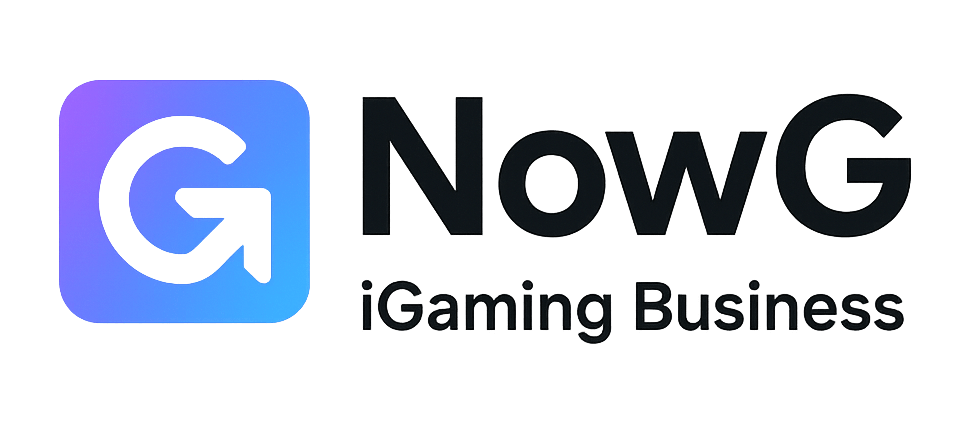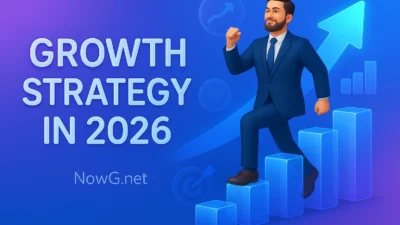If you’re building a partner program in 2026—whether that’s affiliates, referral partners, or full-blown resellers—PartnerStack shows up on almost every shortlist. It’s positioned as an all-in-one partner ecosystem platform: recruit, onboard, track, pay, and scale in one place. But is it the right choice for your stage, motion, and budget? What are the gotchas people don’t tell you during the demo? This is a candid, hands-on review informed by real operator experience—covering strengths, blind spots, hidden costs, deployment realities, and when you should (and shouldn’t) pick PartnerStack.
💡 Bottom line up front: PartnerStack excels for B2B SaaS partner programs that need centralized tracking, automated payouts, marketplace discovery, and multi-partner motions (affiliates + referrals + resellers). It’s less ideal if you’re ultra-lean (pre-PMF), primarily B2C ecommerce, or you require deep, bespoke reseller quoting/procurement flows out of the box.
What PartnerStack Is? (and Isn’t)
What it is: A partner ecosystem platform focused on B2B SaaS. It combines:
- Program operations (recruitment forms, onboarding, content, enablement)
- Attribution & tracking (links, coupons, deals, referrals, multi-touch mapping)
- Payouts (global automated partner payments, tax collection, compliance)
- Partner marketplace (discoverability inside PartnerStack’s network)
- Workflows (tiering, bonuses, automations, nudges)
- Reporting (partner/source performance, LTV by partner, cohorting)
What it isn’t: A full PRM for complex deal registration + co-sell with fine-grained pipeline stages (think enterprise PRMs). Nor is it a full reseller/VAR quoting and distribution system. You can run lightweight reseller motions, but large enterprise channel ops usually need a PRM or custom CRM workflows alongside PartnerStack.
Who Typically Chooses PartnerStack
- Seed–Series C B2B SaaS that want to add affiliates/referrals quickly, with a path to scale.
- Product-led growth (PLG) companies with self-serve funnels where link/coupon-based attribution is clean.
- RevOps-minded teams who value consistent payout operations (one vendor for global payouts + tax).
- Marketing orgs tired of stitching together a dozen tools (forms, tracking, spreadsheets, PayPal mass pay).
Pricing & Total Cost of Ownership (TCO)
PartnerStack doesn’t publish a one-size-fits-all public price sheet. Expect a platform fee (typically annual), plus transaction fees on payouts processed through the network. You may also pay for additional modules (workflows, SSO, advanced analytics) and implementation services. For budgeting, teams commonly model this as a blended % of partner-sourced revenue, which often lands between 3–8% (including platform + payout fees), in addition to commissions paid to partners. Your mileage varies with volume and negotiation.
| Cost Component | What to Expect | Awareness Tips |
|---|---|---|
| Platform license | Annual subscription (tiered by features/scale) | Ask about partner count, programs, API/SSO add-ons |
| Payment processing | Fee per payout (FX, method) | Map geographies & payout rails (ACH, SEPA, e-wallet) |
| Implementation | One-time services (optional but helpful) | Budget 4–8 weeks if complex CRM/BI integration |
| Commissions | What you pay partners (variable) | Model sustainable tiers, recurring vs. one-time |
⚠️ Hidden cost to watch: If you’re migrating an existing program, budget time for data reconciliation (legacy cookie windows, coupon logic, unpaid balances). Under-scoping migration causes trust issues with partners.
Hands-On: What PartnerStack Does Well
1) Clean Partner Onboarding & Marketplace Lift
Creating application flows, terms, documentation, and a partner hub is straightforward. You can publish your listing in the PartnerStack marketplace, which consistently drives incremental partner applications for SaaS categories. The marketplace isn’t a silver bullet, but for early programs it’s meaningful “free” acquisition of motivated affiliates/referrers.
2) Attribution That Makes Sense for PLG
For link-based referrals into self-serve flows (free trial → paid), PartnerStack’s cookie/click tracking and coupon attribution are rock solid. It handles first-touch vs. last-touch logic you define, de-dupes with coupons, and passes data to your CRM/BI via integrations or exports. For many SaaS, this is 80% of the job done.
3) Automated, Global Payouts (& Taxes)
This is a huge operational win. PartnerStack aggregates your partner commissions, handles mass payouts globally, and collects required tax forms. Finance teams breathe easier, and you avoid the compliance headaches of ad-hoc PayPal wires across 50+ countries. If you’ve ever manually paid hundreds of partners monthly, you know this is worth real money.
4) Workflows, Bonuses, & Tiers
Tiering partners (e.g., Bronze/Silver/Gold), automating nudges (“You’re 2 signups away from Silver!”), and issuing bonuses (e.g., launch spiffs, Q4 push) are native features. These mechanics matter when you move beyond “set and forget” affiliate links to ongoing program management.
5) Usable Reporting for Operators (Not Just BI Teams)
Dashboards cover the essentials: partner performance, cohort analysis, payout liabilities, and program health. You’ll still want to push data to your warehouse (Snowflake/BigQuery) for deeper LTV and multi-touch analysis, but PartnerStack’s built-ins are operator-friendly.
Where PartnerStack Falls Short (and Workarounds)
1) Complex Co-Sell & Deal Reg
Co-selling with solution partners (MDF, pipeline stages, joint forecasting) exceeds PartnerStack’s native depth. If you run heavy enterprise motions, you’ll likely pair PartnerStack with a PRM (or Salesforce-native partner apps) for deal reg, approvals, and stage progression. Workaround: keep PartnerStack for payouts/affiliate/referral motions; use CRM for enterprise deal management and sync key events back for rewards.
2) Non-PLG Sales Motions
Attribution gets messy when a partner click leads to a long, multi-stakeholder sales cycle. PartnerStack can track referrals/deals, but you’ll need discipline in CRM to tie opportunity outcomes to the originating partner. Workaround: enforce partner fields on opportunities, use webhooks to attach partner IDs, and align payout triggers to verifiable CRM stages (e.g., Closed-Won + paid invoice).
3) Marketplace Expectations
Some teams overestimate marketplace volume. It’s additive, not your primary engine. You still need outbound recruitment, content, enablement, and partner success motions. Tip: treat marketplace partners like any other: assess fit, onboard, and enable. Don’t expect fire-and-forget.
4) Migration Friction
Bringing a legacy program across involves reconciling historic clicks, coupon logic, and unpaid balances. If partners lose their history or feel short-changed, trust erodes fast. Plan a staged migration with overlap periods and transparent communication. Budget time to import historical earnings for top partners.
5) Edge Cases in Attribution
Cross-device journeys, cookie restrictions, and B2B ad-blockers still create gaps. No platform fully solves this; PartnerStack is no exception. Mitigation: combine links + coupons + in-app referral codes, and push self-reported attribution touchpoints into CRM forms (“Were you referred by a partner?”).
Feature Deep Dive
| Area | What You Get | Operator Notes |
|---|---|---|
| Recruitment | Application forms, terms, marketplace listing | Gate by program (affiliate vs. referral vs. reseller) |
| Onboarding | Partner portal, guides, assets, announcements | Keep “time-to-first-link” < 1 hour; add a 3-step checklist |
| Attribution | Links, coupons, referral/deal forms | Define priority: coupon vs. link; set cookie windows by program |
| Payouts | Automated, global, with tax & compliance | Standardize payout dates; share a calendar with partners |
| Incentives | Tiers, bonuses, challenges | Use quarterly accelerators; sunset promos cleanly |
| Automation | Rules for nudges, tier moves, approvals | Trigger emails at 25/50/75% to next tier |
| Integrations | CRM, billing, analytics, webhooks, API | Push Partner ID to accounts/opps; reconcile with invoices |
| Reporting | Dashboards, exports, cohort analyses | Model partner LTV/CAC by program in your BI |
🔎 Attribution hygiene tips: issue unique codes for top partners, shorten the path from click to trial, and auto-apply coupons on LPs where possible to reduce drop-off and ambiguity.
Implementation: What the First 60–90 Days Really Look Like
- Program design (1–2 weeks) — Define motions (affiliate, referral, reseller), commission logic (one-time vs. recurring), cookie windows, and KPIs. Draft your partner policy & terms.
- Stack & schema (1 week) — Map events from your product/billing/CRM to PartnerStack (signup, trial, convert, invoice paid). Decide what triggers payouts.
- Implementation (2–4 weeks) — Install tracking, connect billing (Stripe/Chargebee/NetSuite), configure programs, set tiers & workflows, build your portal.
- MVP recruitment (1–2 weeks) — List in marketplace, invite warm leads, seed with top customers who can refer. Aim for 50–100 approved partners.
- Enablement & launch (1 week) — Publish 3–5 launch playbooks (how to promote, sample posts, LPs), run a kickoff webinar, set a month-1 bonus.
- Optimize (ongoing) — Weekly QA on attributions & payouts; refine messaging; graduate partners to tiers; start outbound recruiting by ICP.
✅ Success metric for month 1: % of approved partners who produce at least 1 qualified referral (activation rate). World-class programs target 30–50% activation in the first 30 days.
Security, Privacy, and Compliance
- Data: Expect enterprise-grade security practices. Still, ensure your DPA (data processing addendum) matches your obligations (GDPR/UK GDPR/CPRA).
- Taxes & KYC: PartnerStack’s payout/tax workflows reduce your liability—but Finance should still review country-specific edge cases.
- PII minimization: Don’t send more customer data than needed for commissions. Pass hashed identifiers where possible.
Benchmarks & KPIs to Track in PartnerStack
| KPI | Definition | Good Early-Stage Target |
|---|---|---|
| Partner activation rate | % approved partners with ≥1 qualified referral | 30–50% in first 30 days |
| Time-to-first-referral | Median days from approval → first referral | < 14 days |
| Partner-sourced revenue % | % of new ARR/MRR via partners | 5–20% within 6–12 months |
| Partner LTV/CAC | Gross margin value from a partner ÷ enablement cost | > 4:1 |
| Payout accuracy | % payouts without adjustments/disputes | > 99% |
Real-World Upsides (From Operating Partner Programs)
- Time saved on payouts: Going from 20–30 staff hours/month to <2 hours with automated approvals and a final Finance review.
- Quality of life for Marketing: No more duct-taped forms/spreadsheets. Partners get a branded portal and self-serve assets.
- Incremental partners via marketplace: Not floodgates, but a steady trickle of relevant partners who convert when enabled.
- Executive confidence: Clean attribution + consistent payouts = easier to justify growing partner budget.
Common Pitfalls (and How to Avoid Them)
- “Set and forget” mentality: Tools don’t run programs. Assign a Partner Manager, publish playbooks, and run monthly enablement.
- Unscalable commissions: Over-generous lifetime rev share can become a margin bomb. Model cohort unit economics before launch.
- Messy event mapping: If your “conversion” event is unreliable, payouts will be, too. QA your billing & CRM hooks before go-live.
- No partner segmentation: Affiliates ≠ resellers ≠ solution partners. Create separate programs, terms, and enablement paths.
Alternatives & When They Fit Better
(Names omitted here to stay focused on PartnerStack—compare against lighter affiliate tools for B2C/ecom, and heavyweight PRMs for deep deal reg/co-sell. Many teams run a dual-stack: PartnerStack for PLG/affiliate/referral + CRM/PRM for enterprise channel.)
Is “Free” Ever Cheaper Than PartnerStack?
The short answer: rarely, at scale. You can bootstrap with low-cost affiliate plugins or DIY payouts, but you’ll spend real headcount on ops, tax, fraud prevention, and reconciliation. PartnerStack’s fees often pencil out when you value operator hours, payout compliance, and partner trust. If you’re truly pre-PMF or validating channel fit, start scrappy—then graduate once you find repeatability.
Ideal Use Cases
- Affiliate + referral hybrid for PLG SaaS (self-serve trials, coupon onboarding, recurring commissions).
- Customer-to-customer referrals (advocacy flow with tracked links and rewards).
- Light reseller motion (lead pass + commission payout) while co-sell lives in CRM.
- Global partner base where automated payouts and tax are non-negotiable.
Who Should Probably Pass (for Now)
- Pre-PMF startups without a proven conversion engine—partners amplify what already works.
- Enterprise vendors needing deep deal reg/PRM workflows baked-in.
- Pure B2C ecommerce where cheaper affiliate plugins may suffice.
Configuration Playbook (Cheat Sheet)
- Programs: Create separate programs (Affiliate / Referral / Reseller-Lite). Different terms & payouts.
- Attribution: Decide cookie window (e.g., 60–90 days) and coupon priority. Auto-apply coupons on key LPs.
- Events: Map “Qualified signup” (MQL) and “Paid conversion” (SQL) precisely; tie payouts to paid to avoid churn-gaming.
- Tiers: Start with 3 tiers—Bronze, Silver, Gold—based on referred revenue or paid conversions, with accelerators per quarter.
- Payout cadence: Monthly, net-30 from invoice paid. Publish the schedule.
- Enablement: 5 done-for-you assets (email templates, posts, logos, banners) + 2 webinar recordings (product + ICP pain points).
- QA: Test links/coupons across devices, adblockers, and incognito. Run a “friends & family” pilot for 2 weeks.
FAQ (Operator Edition)
Can I pay recurring commissions?
Yes. Common SaaS pattern: 20–30% of monthly billed revenue for 6–12 months, or tapered tiers. Model margin impact carefully.
Does PartnerStack support multi-currency?
Yes on payouts; for attribution/commissions, align billing currency and communicate clear FX policy in your terms.
How do I prevent fraud in PartnerStack?
Use approval gates, velocity rules, minimum invoice ages before payout, and manual review for outliers. Kill self-referrals unless explicitly allowed.
What about co-marketing with PartnerStack?
Host assets in the portal; track link performance; tie MDF (if any) to measurable outcomes. For heavy co-sell, manage in CRM/PRM and mirror rewards in PartnerStack.
The Verdict
PartnerStack is a strong, opinionated platform for scaling B2B SaaS partner programs—especially where links, coupons, and self-serve flows dominate and global payouts are a headache you want to offload. Its marketplace gives you a bonus stream of partners, and the operator experience (onboarding, incentives, reporting) is thoughtfully designed.
It’s not a magic wand for complex enterprise channels, and it won’t replace disciplined CRM hygiene. If your program is still experimental, a simpler tool may carry you until the channel proves itself. But once you see repeatable partner-sourced revenue, PartnerStack’s automation and payout rails tend to pay for themselves—in time saved, trust earned, and scale unlocked.
✅ Recommendation: If you’re a PLG SaaS from Seed to Series C (or later) looking to unify affiliates, referrals, and lite resellers with real attribution and painless payouts, PartnerStack is absolutely worth a trial—just pair it with clear economics, clean events, and a dedicated partner owner.
Quick Comparison Table (Use This in Your Vendor Sheet)
| Dimension | PartnerStack Evaluation | Operator Notes |
|---|---|---|
| Program coverage | Affiliates, referrals, light resellers | Enterprise PRM still needed for deep co-sell |
| Attribution | Links, coupons, referral/deal forms | Great for PLG; combine with CRM for long cycles |
| Payouts | Global, automated, tax-aware | One of its biggest strengths |
| Recruitment | Marketplace + forms | Marketplace = additive, not primary |
| Enablement | Portal, assets, announcements | Publish playbooks day one |
| Incentives | Tiers, bonuses, challenges | Key lever for activation and scale |
| Integrations | CRM, billing, analytics, API | Map events precisely; QA before go-live |
| Reporting | Solid operator dashboards | Push to BI for LTV & multi-touch |
| Time to value | 4–8 weeks for most SaaS | Faster if PLG & Stripe-based |
| TCO | Platform + payout fees | Model as % of partner revenue |
Have a specific motion you want pressure-tested (e.g., two-sided marketplace referrals, community-led affiliates, or solution partners with MDF)? Map it against the configuration playbook above. If the key outcomes are link/coupon referral conversions, automated payouts, and transparent partner ops, PartnerStack is likely a strong fit. If your must-haves center on multi-stage deal reg, joint account planning, and deep co-sell analytics, you’ll want PartnerStack + a PRM—or a different core system entirely.




